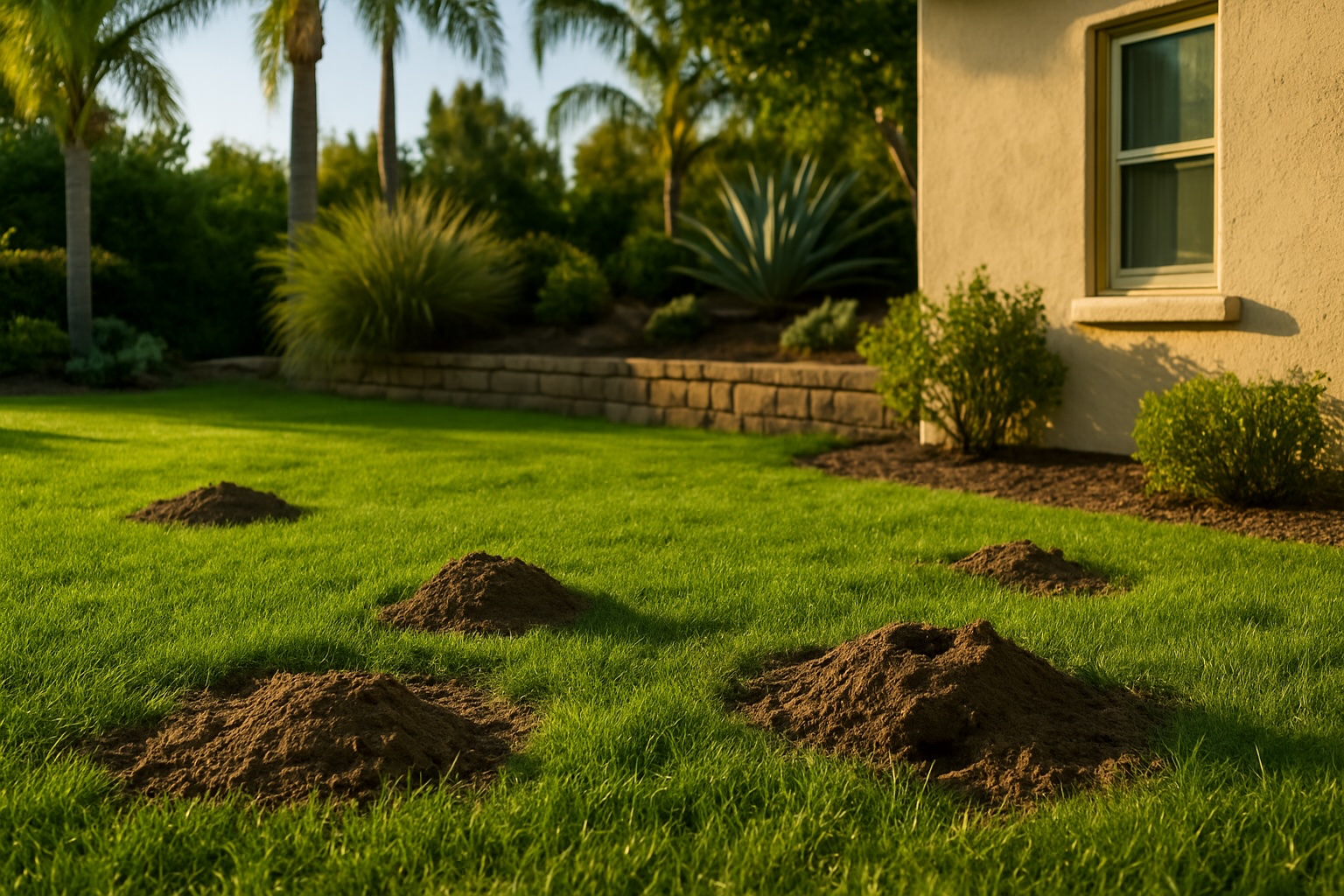
Gophers may be small, but they can wreak havoc on San Diego suburban yards. These burrowing rodents are infamous for uprooting plants, damaging irrigation systems, and leaving unsightly mounds across otherwise well-tended landscapes. Effective gopher control requires early identification, smart prevention tactics, and, when necessary, targeted removal efforts.
How to Identify Gopher Damage in San Diego Yards
- Mounds of Fresh Soil: Gophers push dirt to the surface, creating crescent or fan-shaped mounds often mistaken for mole activity.
- Disrupted Plants: Sudden wilting, missing roots, or complete plant disappearance are telltale signs of gopher feeding below the soil.
- Soft or Sinking Ground: Extensive tunnel systems can weaken the soil structure, creating soft patches or minor collapses in your lawn.
Why Gophers Are a Persistent Problem in San Diego
San Diego’s mild climate and abundance of irrigated suburban lawns create ideal conditions for gophers year-round. In drier inland suburbs, gophers are drawn to watered yards where vegetation thrives. Even coastal areas can experience gopher issues, especially in parks, gardens, and neighborhoods with lush landscaping.
Best Practices for Gopher Prevention
- Install Underground Barriers: Use galvanized hardware cloth buried at least 18–24 inches deep around vegetable beds or prized plantings.
- Choose Gopher-Resistant Plants: Lavender, rosemary, daffodils, and society garlic are examples of plants less attractive to gophers.
- Maintain Your Yard: Minimize weedy or overgrown areas that can hide gopher activity. Regular mowing and trimming exposes mounds early.
- Early Intervention: Address new mounds quickly before gophers expand their tunnels across your yard.
Natural Gopher Deterrents
While no method guarantees complete prevention, several natural tactics may help discourage gophers:
- Castor Oil Treatments: Commercial repellents using castor oil can saturate the soil and make areas less hospitable to gophers.
- Predator Presence: Encouraging natural predators like owls, snakes, and cats can create an unfriendly environment for gophers.
- Vibrating Stakes: Solar-powered vibrating stakes emit pulses that may drive gophers away from treated zones over time.
When to Consider Trapping or Professional Help
For larger infestations or stubborn gophers, trapping is the most reliable method. You can set traps directly in active tunnels near fresh mounds. Always wear gloves to avoid transferring human scent to traps. If DIY methods fail, licensed pest control services in San Diego specialize in humane and effective gopher removal.
Legal and Safety Considerations
Using poisons or fumigants for gopher control is heavily regulated in California. Always consult local San Diego County guidelines before considering chemical control methods. Trapping remains the safest and most eco-friendly option for residential yards.
Seasonal Timing for Gopher Management
- Spring: New gopher activity often spikes with fresh plant growth. Spring is an ideal time for proactive yard inspections.
- Summer: Gophers seek irrigated lawns during dry months—be extra vigilant if you’re watering your landscape regularly.
- Fall: Cooler temperatures slow gopher activity slightly, but monitoring and maintenance remain important.
- Winter: Gophers remain active underground; traps can still be effective even during the rainy season.
Recommended Resources for San Diego Homeowners
Managing gophers takes patience, consistency, and knowledge of local conditions. By acting early and implementing these proven strategies, San Diego homeowners can protect their landscapes and enjoy beautiful, gopher-free yards year-round.

